WHAT IS CLEANING IN PLACE? HOW DOES IT WORK, AND WHERE SHOULD YOU USE IT?...
14th June 2011
Source:
Burkert Fluid Control Systems
....a basic primer from Burkert answers these & many more questions.
Cleaning in Place (CIP) has been around for approximately 50 years, and is commonly used in hygiene critical industries, such Food, Beverage and Pharmaceutical, to clean a wide range of plant. CIP refers to the use of a mix of chemicals, heat and water to clean machinery, vessels or pipe work without dismantling plant. The process can be one shot, where everything goes to drain, or recovery, which recycles most of the liquid. Overall, CIP can be a very efficient way of cleaning.
The principles of CIP can be applied to any industry and plant where hygiene is critical; and the process is usually an integral part of any automated plant. Increasing Health and Safety legislation is set to make CIP more common, which is a good thing because a shiny surface on the outside of plant is no guarantee of cleanliness on the inside.
CIP is principally concerned with soil removal: soil being anything that should not be present in a clean vessel. Soil can cause tainting and can often be smelt. It can be visible (scale, foreign bodies,) or invisible in the form of bacteria, such as E Coli, or Yeast spores. The time needed to remove soil is at least 15 minutes using a suitable chemical (strength dependent on chemical supplier and product) at temperatures above 50 degrees C, but no greater than 75 degrees C because there is no advantage to be gained above this temperature.
CLEANING AGENTS
Commonly used chemicals for soil removal include Caustic Soda, Phosphoric and Nitric acids, Sodium Hypochlorite (Hypo) and Peracetic Acid (PAA). Caustic Soda is an alkali typically used at 0.5% - 2% volume. It reacts with the fats in the soil and softens it for removal. One downside is that Caustic Soda is not effective for removing scaling. In addition, sequestriants are often added to keep soiling in solution.
Phosphoric and Nitric Acids are used in detergent formulations for scale removal, often at lower temperatures than Caustic. These acids must be used with care as they can attack valve and pump seals. They are often used in dairies for one week in every 6 weeks to remove milk scale, and can be used after commissioning to remove installation debris.
Sodium Hypochlorite (Hypo) offers the advantage of a very low cost. It is used primarily for disinfection because its ability for soil removal is poor. The active ingredient of Hypo is Chlorine (Bleach). This can corrode Stainless Steel in high concentrations and will attack seals and personnel. It will also taint if not rinsed out; and is dangerous if mixed with acid, forming Chlorine gas, which is poisonous.
PAA is an equilibrium mixture of acetic acid and hydrogen peroxide. It is a powerful oxidising agent with an oxidation capacity higher than sodium hypochlorite and chlorine dioxide, and is comparable to the oxidative capacity of ozone. PAA at 75 mg/L is reported to successfully kill 100% of a 10(7) cell/ml yeast or bacterial population in 30- seconds.
CIP Line & Vessel Cleaning
When cleaning lines in process equipment using CIP, the correct fluid velocity must be achieved to obtain good cleaning. Laminar flow, from velocities below 1.5m/sec does not give good cleaning characteristics. What is required is turbulent flow at velocities between 1.5-2.1 m/sec. There is no gain at velocities above 2.1 m/sec.
In the cleaning of vessels two main methods are generally employed. The first uses high pressure cleaning heads to remove soil by mechanical action: the vessel surface being contacted in a series of passes. The second method employs low pressure cleaning heads that rely purely on chemical action to remove the soiling.
CIP Return
The majority of problems with CIP can be attributed to poor CIP return. This causes excessive CIP times, excessive use of detergent and heat with high effluent discharge.
To overcome these problems the system for Return must quickly and efficiently return the cleaning solutions back to the CIP Set. Critical in this respect is the choice of scavenge pump.
Poor scavenge allows back up of cleaning solution and poor cleaning of the lower part of the vessel. In contrast, effective scavenge allows fresh cleaning solutions to contact the vessel walls and carry away soil effectively.
CIP Optimisation
Most CIP sequences are never altered from post installation settings; these are usually a set of “defaults” which are set on commissioning. However CIP operators can optimise their systems by monitoring a number of key parameters. These are:
• What temperature and concentration (conductivity) are the Caustic tanks set to? - often set too high with no added benefit.
• Consider the Pre-Rinse – does it run clear and then keep going?
• Caustic Fill – how high are the Return Conductivity and Temperature Transmitters set?
• Intermediate Rinse – is it removing caustic solution and temperature prior to sterilisation?
• Sterilisation – what strength is the sterilising agent and how long is the contact time?
Finally all changes resulting from the CIP monitoring process should be documented and validated to meet any statutory regulations, and/or specific client requirements.
CIP is principally concerned with soil removal: soil being anything that should not be present in a clean vessel. Soil can cause tainting and can often be smelt. It can be visible (scale, foreign bodies,) or invisible in the form of bacteria, such as E Coli, or Yeast spores. The time needed to remove soil is at least 15 minutes using a suitable chemical (strength dependent on chemical supplier and product) at temperatures above 50 degrees C, but no greater than 75 degrees C because there is no advantage to be gained above this temperature.
CLEANING AGENTS
Commonly used chemicals for soil removal include Caustic Soda, Phosphoric and Nitric acids, Sodium Hypochlorite (Hypo) and Peracetic Acid (PAA). Caustic Soda is an alkali typically used at 0.5% - 2% volume. It reacts with the fats in the soil and softens it for removal. One downside is that Caustic Soda is not effective for removing scaling. In addition, sequestriants are often added to keep soiling in solution.
Phosphoric and Nitric Acids are used in detergent formulations for scale removal, often at lower temperatures than Caustic. These acids must be used with care as they can attack valve and pump seals. They are often used in dairies for one week in every 6 weeks to remove milk scale, and can be used after commissioning to remove installation debris.
Sodium Hypochlorite (Hypo) offers the advantage of a very low cost. It is used primarily for disinfection because its ability for soil removal is poor. The active ingredient of Hypo is Chlorine (Bleach). This can corrode Stainless Steel in high concentrations and will attack seals and personnel. It will also taint if not rinsed out; and is dangerous if mixed with acid, forming Chlorine gas, which is poisonous.
PAA is an equilibrium mixture of acetic acid and hydrogen peroxide. It is a powerful oxidising agent with an oxidation capacity higher than sodium hypochlorite and chlorine dioxide, and is comparable to the oxidative capacity of ozone. PAA at 75 mg/L is reported to successfully kill 100% of a 10(7) cell/ml yeast or bacterial population in 30- seconds.
CIP Line & Vessel Cleaning
When cleaning lines in process equipment using CIP, the correct fluid velocity must be achieved to obtain good cleaning. Laminar flow, from velocities below 1.5m/sec does not give good cleaning characteristics. What is required is turbulent flow at velocities between 1.5-2.1 m/sec. There is no gain at velocities above 2.1 m/sec.
In the cleaning of vessels two main methods are generally employed. The first uses high pressure cleaning heads to remove soil by mechanical action: the vessel surface being contacted in a series of passes. The second method employs low pressure cleaning heads that rely purely on chemical action to remove the soiling.
CIP Return
The majority of problems with CIP can be attributed to poor CIP return. This causes excessive CIP times, excessive use of detergent and heat with high effluent discharge.
To overcome these problems the system for Return must quickly and efficiently return the cleaning solutions back to the CIP Set. Critical in this respect is the choice of scavenge pump.
Poor scavenge allows back up of cleaning solution and poor cleaning of the lower part of the vessel. In contrast, effective scavenge allows fresh cleaning solutions to contact the vessel walls and carry away soil effectively.
CIP Optimisation
Most CIP sequences are never altered from post installation settings; these are usually a set of “defaults” which are set on commissioning. However CIP operators can optimise their systems by monitoring a number of key parameters. These are:
• What temperature and concentration (conductivity) are the Caustic tanks set to? - often set too high with no added benefit.
• Consider the Pre-Rinse – does it run clear and then keep going?
• Caustic Fill – how high are the Return Conductivity and Temperature Transmitters set?
• Intermediate Rinse – is it removing caustic solution and temperature prior to sterilisation?
• Sterilisation – what strength is the sterilising agent and how long is the contact time?
Finally all changes resulting from the CIP monitoring process should be documented and validated to meet any statutory regulations, and/or specific client requirements.
Similar articles
More from Burkert Fluid Control Systems
- Continuous water quality analysis for boreholes 6th July 2020
- Controller delivers precision microlitre dosing 14th May 2020
- Multi-medium testing facility for fluidic components 19th March 2020
- Micro precision for time-pressure dosing 10th December 2019

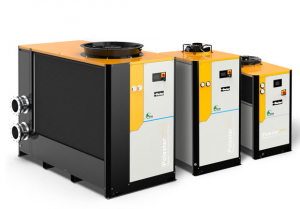
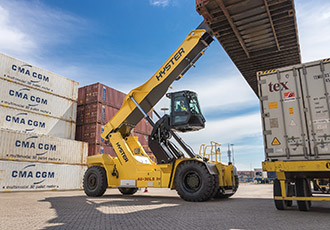
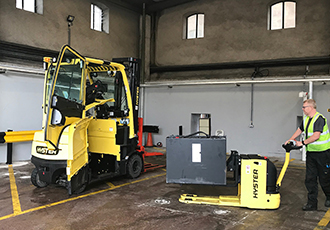
.jpg)
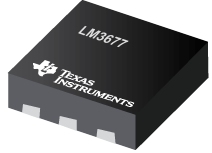

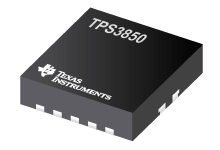
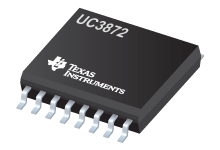

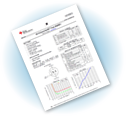

Write a comment
No comments